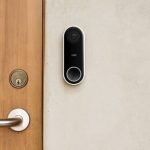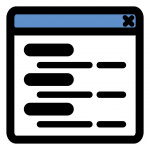Seven Ways To Stay Productive In A Distraction-Ridden Office
I still remember my first cubicle fondly, even though it was many years ago. It was my place in the big world of my company. My name plate was tacked up outside, and I decorated the inside with a few photos and inspirational quotes. On my desk, I laid out any files I needed, kept my stash of essentials like Kleenex close at hand, and stowed some chocolate in a drawer.
My cubicle wasn’t big or fancy, but it was mine—a place to work and a work home, of sorts.
The rise of open offices has since done away with many a cubicle—a change of affairs that many have greeted with relief. But as the walls separating you from your colleague come down, we’ve gained exposure—to help us collaborate and communicate, to be sure—but we’ve also become more exposed. It’s the equivalent of going from driving a car to taking public transit.
For some, that’s been great. Simply being able to keep in your sight-lines a bunch of people who are maintaining at least the appearance of being productive conjures the coffee shop or library. They get more done in a more focused way.
Others don’t thrive as well—thanks to two distinct but related kinds of distraction: unmanaged interruptions from others, which can happen in any office environment but tend to be exacerbated when your colleagues can see you at all times; and the more solo sort, when you sit in front of a screen and can’t tune out the distractions around you. Here are a few strategies to help you stay productive when faced with both problems.
If You’re Always Getting Interrupted
To start to create some psychological space around yourself that others won’t intrude upon, you need to set expectations about your working style and availability. Try these three tips:
1. Schedule your interactions: Just because your colleagues can see you all the time doesn’t mean you want them to come ask you questions all the time. If you’re a manager and your team members need a lot of direction, set up short meeting times for them to get your input. For example, you could have a short check-in meeting each morning and another after lunch instead of them interrupting you every time they think of something. This strategy is especially useful if you sit right next to them.
2. Agree on no-interruption zones: Especially in smaller offices, some my coaching clients have been able to work out agreements that throughout the office there’s a two-hour period each day for interruption-free working time. They’ve also asked people to schedule meetings with them for non-urgent items instead of just dropping by. If your office is big enough where this sort of norm won’t work, you might consider what The Time Bandit Solution author Edward Brown calls a “time lock agreement,” where you hash out with individual colleagues a time block when you’ll both focus on your own work uninterrupted.
3. Turn refocusing into a repeatable a habit: For those inevitable and unavoidable times when you do face interruptions, you can develop a quick routine for getting back on track. That could look be a short, impromptu meeting with your direct reports, or even just taking a quick bathroom break and refilling your water bottle. What you do doesn’t matter so much as the fact that you have a habit in place—an action or activity that helps you step back and regain your focus. The more you strengthen that habit, the better you’ll train your mind for action.
If You Succumb To Distractions All On Your Own
Once you’ve created focused space around yourself at work, you then need to keep yourself on track. Even after managing interruptions from other people, it’s still possible to lose your focus. These four techniques can help:
4. Make a daily map: You don’t need to build a rigorously prioritized to-do list each morning if that isn’t your thing, but starting the day with a clear sense of what you want to focus on is a helpful pace to start. Even if you depart from it later, you’ll want to map out the general order of steps you’ll need to take from the first moment you begin working. The simple act of sketching that out can help you focus. You’re more likely to start paying attention to random side conversations when you know exactly what you should be doing instead, right from the get-go.
5. Break out those headphones—the good ones: Earbuds are fine in a pinch, but a pair of top-notch noise-canceling headphones can be one of the biggest productivity boosts around. Some of my clients tell me that investing in a quality pair has transformed their ability to get work done at their desks in all kinds of environments. Even if you don’t play music, the noise-canceling effect can still create a sort of psychological wall between you and your colleagues. Others find that the right tunes can help even more, though. Here are a suggestions on which type of music might be the most beneficial.
6. Stagger your work hours: Coming in early before others are in the office and leaving early, or coming in later and staying later, can help you get in some focused time during those “off-peak” hours. If you find yourself doing both, though—coming early and staying late—that’s a clear sign you aren’t improving your productivity at all. In that case, it’s time to take some intentional time off midday to run an errand or exercise, so you still have some personal time to recharge and get back to your desk refreshed and focused. Many professionals now have more flexibility with how they work. Some people start early—but from home—then go into the office when it’s time to do less focused work.
7. Escape: Sometimes the best solution to a distraction-ridden office is to leave it. I’ve had clients work from telephone booths, conference rooms, coffee shops, or their kitchen tables in order get their most important work done. Setting aside one day a week when you’re not in your normal space can help you boost and maintain your productivity. Simply switching from one location to another for different types of work can help, too. For example, I’ll often move from my desk to a different work area if I’m going from answering email to writing an article. The physical shift helps me make the mental shift.
Fast Company , Read Full Story
(29)














